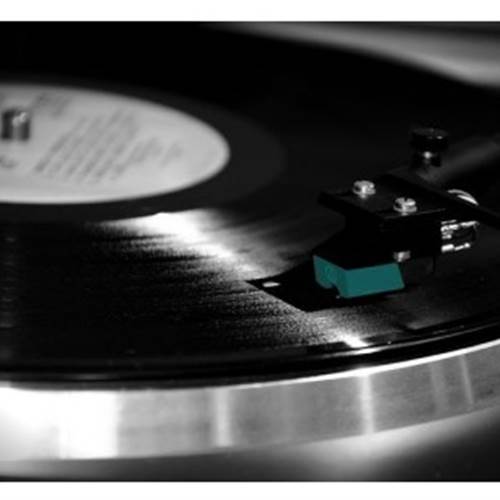
Let Your Tongue Die!
Posted Thursday, February 7th 2013 by David McCall
The singer in front of me looked back, questioning my sanity. Of course, I didn't actually mean die, nor did I mean for her to sing with her tongue flopping out of her mouth, hilarious as that might be. No, what we were seeking was tongue...
The singer in front of me looked back, questioning my sanity. Of course, I didn't actually mean die, nor did I mean for her to sing with her tongue flopping out of her mouth, hilarious as that might be. No, what we were seeking was tongue relaxation, which unfortunately eludes many singers, including this one. In fact, a large portion of my teaching day is devoted to freeing singers of tongue tension and its undesirable effects. I'll take you through one student's first few steps toward freedom of the tongue. (Cue angelic choir...)
This particular singer is a musical theater actress in her early twenties. She came to New York Vocal Coaching wanting to learn how to use her mixed voice to produce the contemporary Broadway sound that would make her competitive at auditions. Her undergraduate education had trained her in the pseudo-classical method (e.g., head voice in chest voice range, and an absolute resistance to chest voice), but she felt frustrated and out of control when she would attempt mixing or belting on her own. She even confessed that she had stopped auditioning because she couldn't count on her voice anymore.
When we first started vocalizing, I could tell she had a gift. She loved to sing and it showed, but her voice wasn't reflecting the nuance she wanted to bring to her work. She was pushing in her middle-chest to middle-mixed voice; thus, she had to push harder to sing any higher. The voice was strident and harsh above A4. She had one general loud volume in her chest and mixed-voice ranges, which ultimately led to no mixed voice at all. In her head voice she wasn't able to produce any sound above E5 without major squeeze and she felt a choking feeling on her higher notes. Eventually, her voice would crack, abruptly transitioning into head voice.
This student's voice was being robbed by that common culprit: tongue tension. It's a tough issue to self-diagnose. Without outside (and trained) eyes and ears, you may chalk it up to "really feeling it" or "this song is too high for me." And even worse, a beginning singer will often judge his or her singing in terms of how hard she worked, unwittingly glorifying the tension. This particular student told me that while singing she felt an overall sense of heaviness, and after she felt tired and sometimes sore. It was stealing the joy from her singing.
I could see her frustration, but I knew exactly how we would spend our session together…
First, we identified the problem. Indeed, she felt her tongue retract, or pull back into the throat, with the onset of each sung sound. Not only that, she had been subtly using tongue tension to imitate the colors she and her earlier instructors had been seeking, and now she was heavily reliant upon her tongue in every aspect of her singing. This would be a challenge, but we were ready to slay the dragon.
We started with the whispered "AH" exercise from revised edition of Michael McCallion's The Voice Book. It's an excellent tool to release tongue tension. Think of saying "Hi" breathily and in super slow motion. (Channel your inner Southern belle!) When you identified the sensation of no tension, try the breathy "Hi" a little faster. It sounds like you're saying "eye" over and over again. You feel the back-and-forth motion of the tongue. The faster you're able to make the tongue shift without tensing, the freer the tongue.
Once she got the hang of that exercise, we started incorporating pitches. It's important to start with vocal exercises that use small intervals when we're wanting to unravel tongue tension, so I gave her a two-tone pattern sung on "EE" (i.e., "geese"):
1 - 2 - 1
or...
A3 - B3 - A3
As she slid up to the higher tone, she could feel the tongue trying to retract again. So we made an adjustment. She placed the relaxed tip of her tongue between her lips. (Think of it as a hum position with tongue showing.) Now we could really see when her tongue was trying to help her change the pitch. It took some practice, but she finally made it through the exercise without the tongue retracting.
The singer felt a little lost at first. She was without her star player. But slowly, note by note, she started to feel the possibility of singing without the tension she had taken for granted. We both took note of the stark difference in her tone. She no longer sounded heavy and labored, but clean and buoyant. She even said she felt like she wasn't working anymore.
The next step was to return the tongue to the "EE" position. Tension began to set in again, but not for long. To achieve her "EE" vowel, she had been letting the tongue pull away from the teeth and press low into the jaw. This was morphing her "EE" into an "IH" (think "if"). Her new tongue "EE" position had to incorporate the relaxation we had felt before. We adjusted the tongue position to include the tip of her tongue touching her bottom teeth. Voila! Pure "EE" vowel without tongue tension.
Since this session, this singer has made tremendous improvement. She easily glides through her registers, rarely cracks, and has increased her range. Most importantly, however, is the newfound confidence she feels.
How about you? Do you feel heaviness while you sing? Are you tired or sore after? Are you able to complete the exercises mentioned above without tongue interference? If so, Huzzah! If not, practice the exercises mentioned above, and depending where you are on your vocal journey, you may want to investigate starting voice lessons. There are many great teachers out there. Find one in your area and get started.
Until next time, happy singing!
**For an audio example of tongue tension at work, check out these two songs by Jewel: "Save Your Soul" and "Hands." In "Save Your Soul" she utilizes tongue tension, particularly in the chorus, for effect. It gives her voice a thick, throaty quality. On the other hand, that tension is gone in "Hands." The tongue freedom lets the voice sound lighter, freer, and allows her to use a much more intricate riff in the chorus.

David McCall
Senior Voice Teacher, Head of Vocal Development
David has become one of the leading instructors of Contemporary Voice in New York City, with clients ranging from Broadway singers (Billy Elliot, Matilda), Classical and sacred music singers, cantors in New York City Synagogues, to Professional Rock and Pop artists, some of which have toured and been signed to record contracts, appeared on shows like The Voice and American Idol, and performed at venues such as SXSW. Additionally, David has taught as a Master Teacher of Contemporary Voice for the NYSTA Comparative Vocal Pedagogy series.

NYVC Singer Spotlight: Nodar Khurtsosov
In this article, I speak with frontman of the gothic-industrial metal band Fellahin Fall and NYVC student Nodar Khurtsosov about his experience taking voice lessons.

TLC for your R&B
The best part of my job as an instructor at New York Vocal Coaching is helping varied singers gain control over their voices. In this article, I want to share a few thoughts on the R&B style and one of my artists who is working to master her R&B sound.

Tending The Garden
I don’t have time to practice, and I don’t want to bother my neighbors.